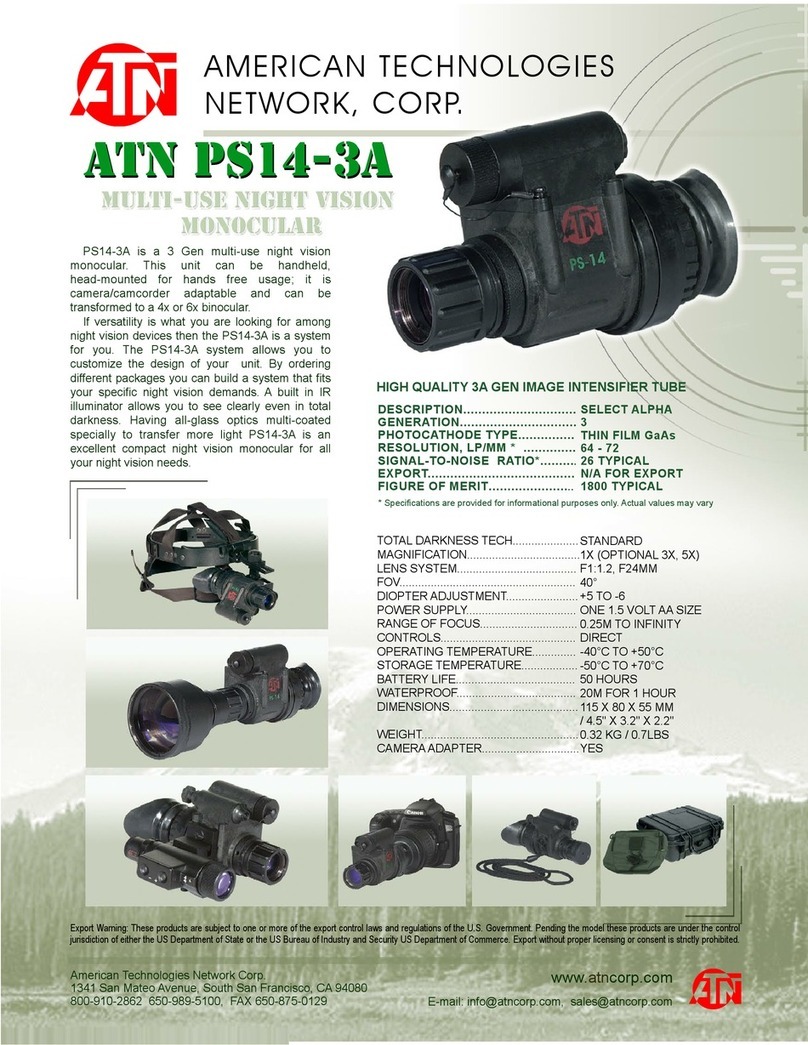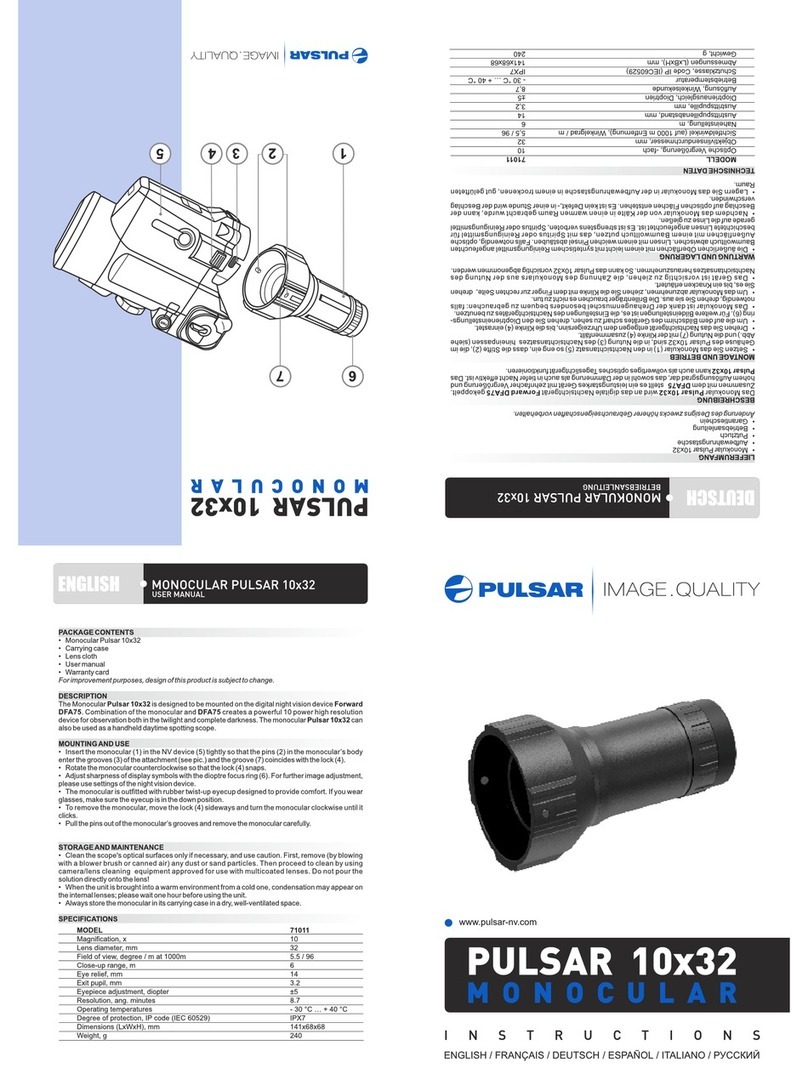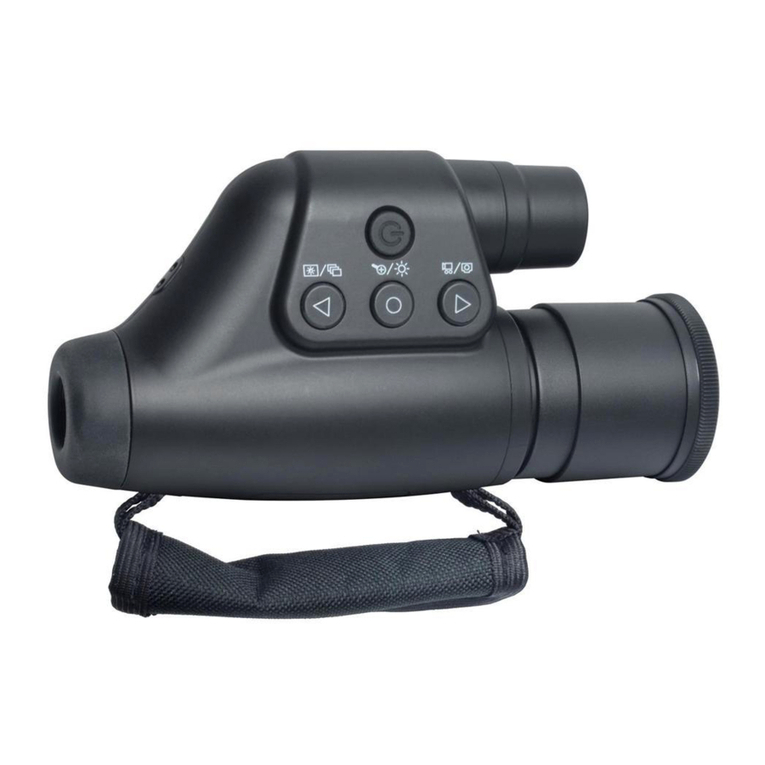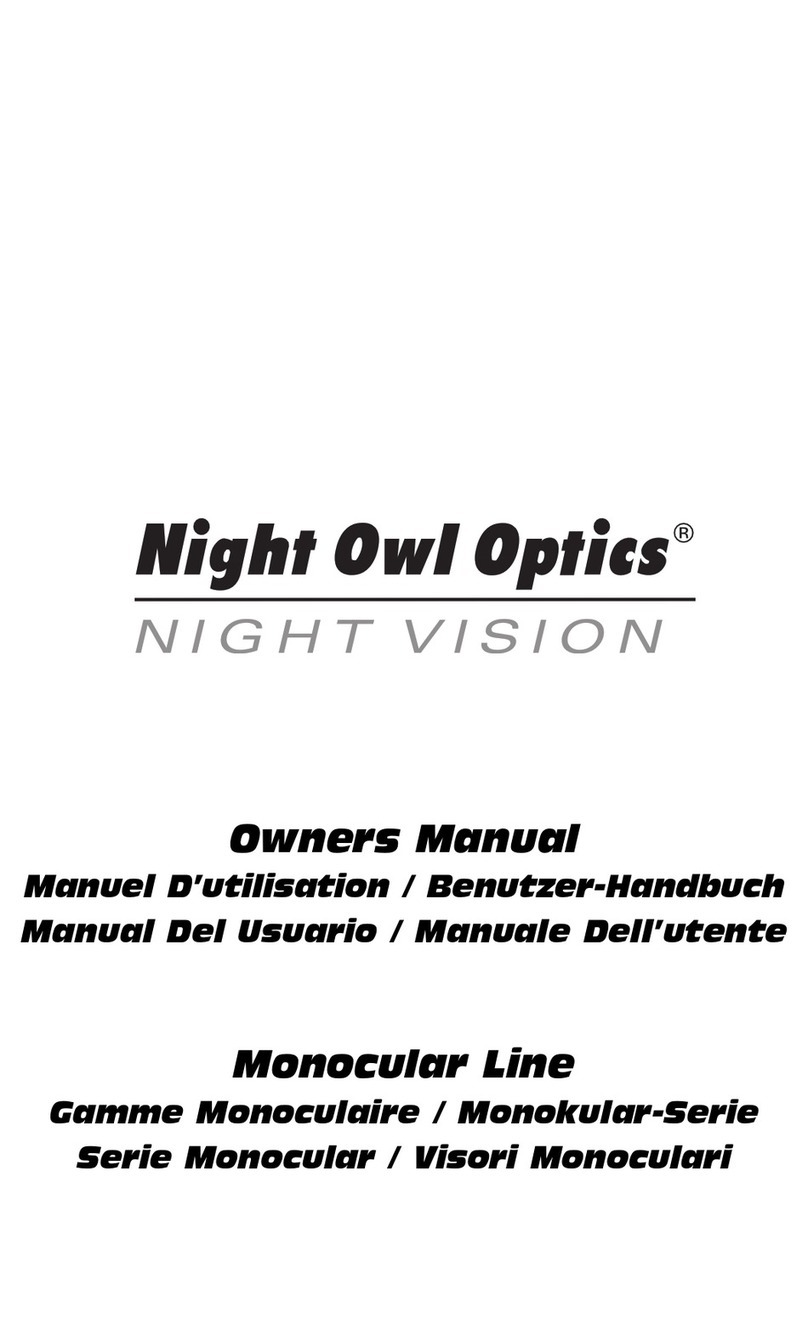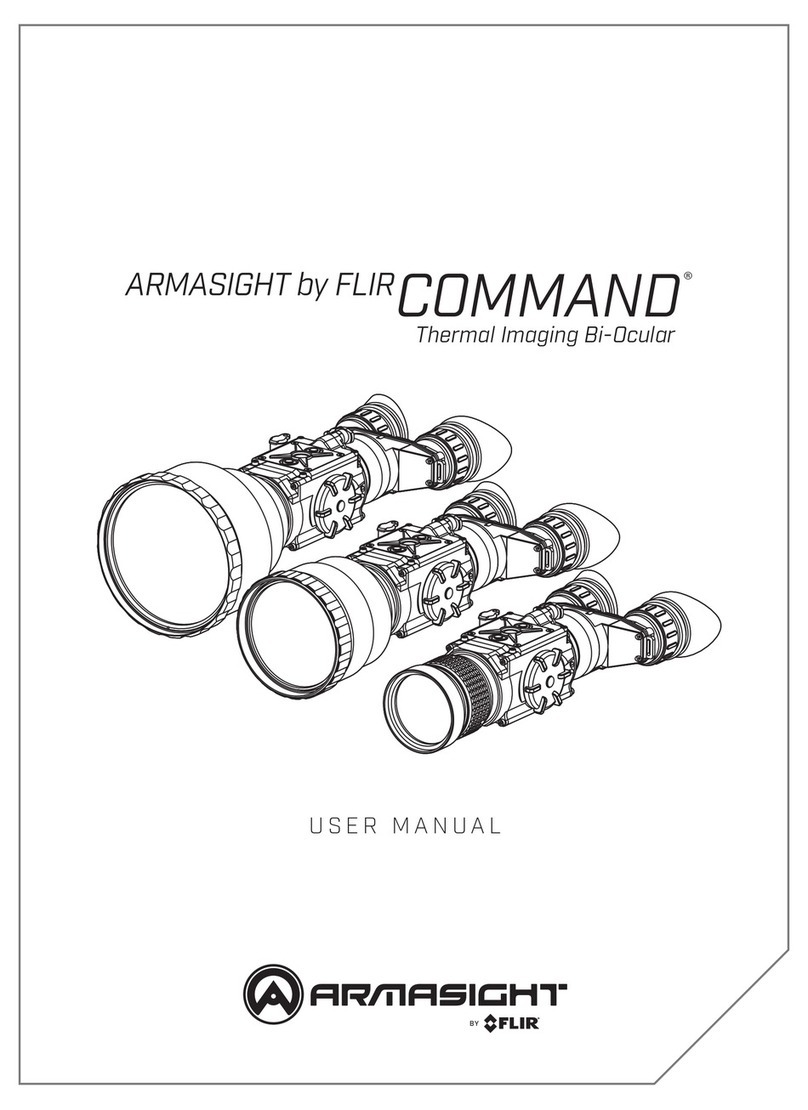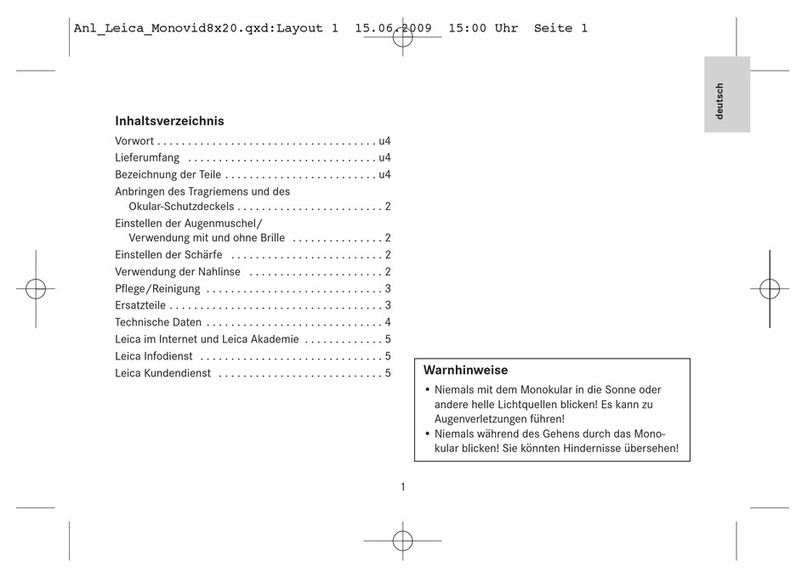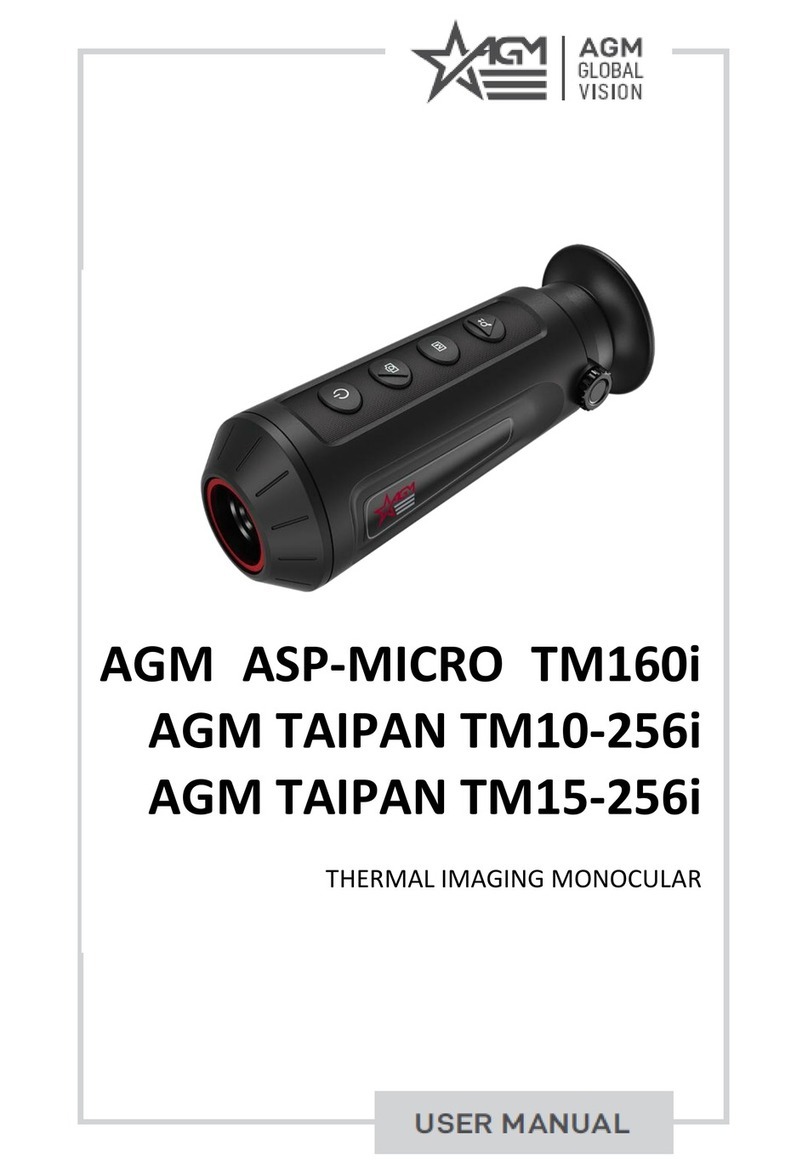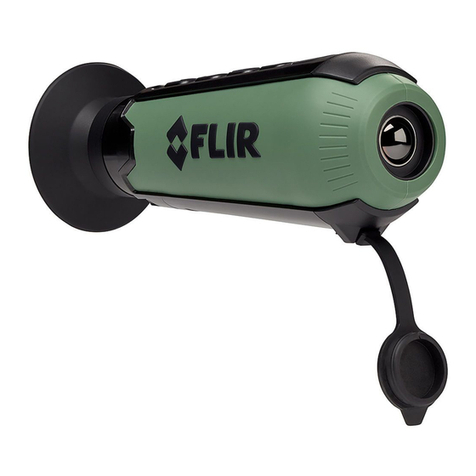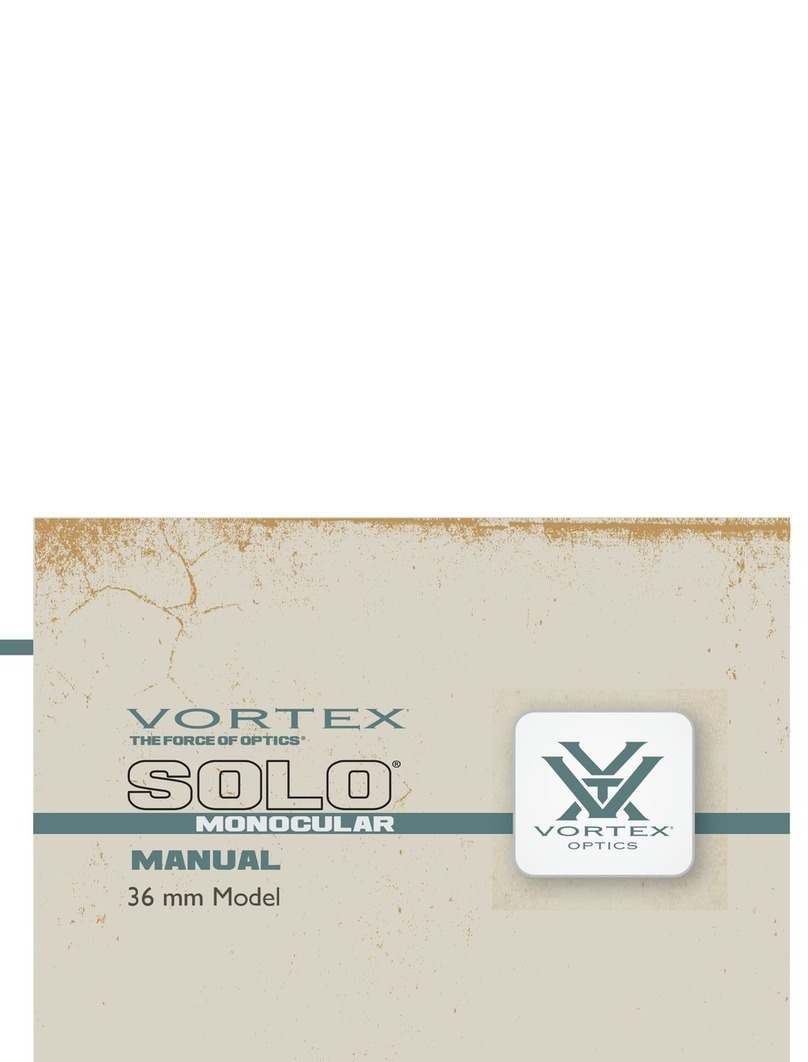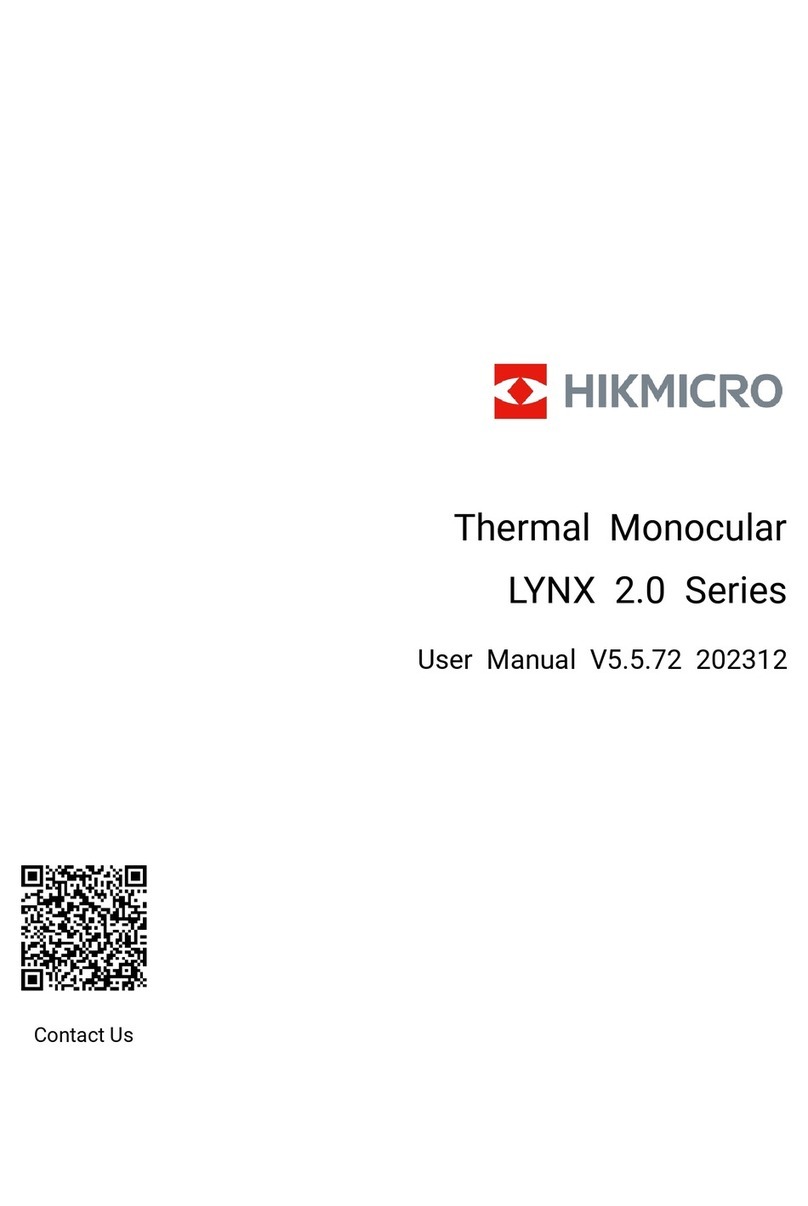
5
Image Quality
The image you see through a Night Vision device is VERY
DIFFERENT from the image observed using day-time monoculars. A
Night Vision image is electronically amplified and then reproduced
on a phosphorus screen and therefore not as “clear” as a day-time
monocular image.
Light and dark marks (spots) caused by the Electronic Intensifier
Tube can be seen in the field of view. These are normal and are not
defects in the Electronic Intensifier Tube.
Image sharpness is also not consistent across the field of view. The
image has very high resolution in the center. The image becomes more distorted toward the periphery
of the image. Due to our sophisticated corrective optics, the amount of distortion in your Night Vision
device is less then the distortion found in other Night Vision devices.
Typical Image Appearance
Use of the Infrared Illuminator in a closed room, or at close range, will exaggerate the light and dark spots
on the Electronic Intensifier Tube. The Infrared Illuminator, although invisible to human and animal eyes,
is very bright at close range when viewed through the device. This bright light exaggerates the spots on
the Electronic Intensifier Tube. Testing your Night Vision device indoors with the Infrared Illuminator, at
close range, is not representative of the performance of the device in its intended outdoor application.
Frequently Asked Questions
Why are the projected images always green using Night Vision technology?
Night Vision phosphor screen is purposefully engineered because the human eye can differentiate
more shades of green than other colors.
How should I care for my Night Vision device?
Do not operate in lighted conditions, device is for use in the dark.
Do not drop the device. The internal intensifier tube is made of glass and is sensitive to impact.
Why do you focus both the front (Objective lens) and Eyepiece (Ocular)?
You do not see through the Night Vision device, like a pair of binoculars. Rather, you see an image
on the phosphor screen on the back of the tube. The objective lens focuses the image on to the front
of the intensifier tube. That image is then converted into electrons. The electrons strike the
phosphorous screen converting electrical energy into a visible image. The eyepiece focuses your
vision on to the image on the phosphorous screen.
What is the effective range of Night Vision?
Maximum range is up to 700 ft. depending on the model. The maximum viewing distance depends
on the environmental conditions. Overcast conditions, fog or rain will reduce the effective distance
you can see. The Infrared Illuminator will increase viewing range, especially in areas of complete
darkness where there is no ambient light.
What is the maximum effective distance of the Infrared Illuminator?
75 to 125 yds. The farther the object, the less intense the infrared light will be on the target.
Are Night Vision devices safe?
Night Vision products include shield-encased image intensifiers. The infrared illuminator utilizes light
emitting diodes (LED’s) operating in the infrared range and will not harm your eyes like a laser.
CAUTION: Do not point Infrared Emitter directly into eye at close range.
The infrared Emitter emits a BRIGHT, although invisible, beam of light.
As with any bright light, do not point into the eye.
Recognize that the image produced on the phosphorous screen can be very bright. Staring into a very
bright light causes the pupil to constrict. Your eye needs time to adjust to ambient light.


